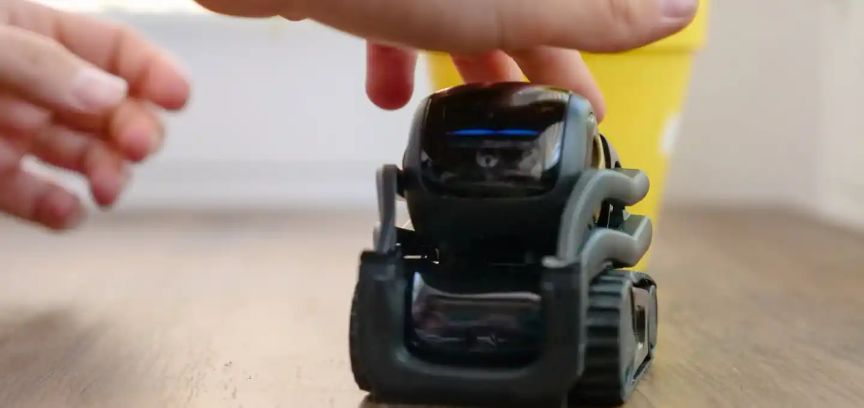Japanese Robot Pets: A Peek into the Future
4 min read
29 Feb 2024
In recent years, there has been a remarkable evolution in the field of robotics, particularly when it comes to the creation of lifelike robot pets. Japan, renowned for its technological innovations, has been at the forefront of this movement, offering a glimpse into what the future of companionship and interaction with artificial beings might look like. In this article, we'll explore the fascinating world of Japanese robot pets and their potential impact on our lives.
1. Aibo by Sony: The Robotic Canine Companion
One of the most iconic robot pets hailing from Japan is Aibo, developed by Sony. Aibo is a robotic dog designed to mimic the behavior and characteristics of a real dog. It boasts advanced artificial intelligence, which enables it to learn and adapt to its environment and the people around it.

Aibo can respond to voice commands, recognize faces, and even express emotions through its movements and sounds. It has sensors that allow it to navigate spaces, avoid obstacles, and learn from its experiences. This level of interaction and adaptability makes Aibo a compelling choice for those seeking a robotic companion.
2. Paro: The Therapeutic Robotic Seal
Paro is a unique creation from Japan that serves a therapeutic purpose. It is a robotic baby seal designed to provide comfort and companionship, particularly for individuals in hospitals, nursing homes, or those experiencing emotional distress.
Paro responds to touch and sound, making it a comforting presence for those who interact with it. It can exhibit lifelike movements and expressions, helping to reduce stress and promote emotional well-being. Paro's success in therapeutic settings demonstrates the potential for robot pets to enhance our mental and emotional health.
3. Lovot: The Huggable Robot Companion
Lovot is a heartwarming creation from Groove X, a Japanese robotics company. It is a small, round robot designed to evoke feelings of affection and care. Lovot is equipped with sensors that detect human touch and movement, allowing it to seek out and respond to interactions.
Lovot's purpose is simple yet profound: to bring happiness and warmth into people's lives. Its round body, expressive eyes, and soft fur make it irresistibly huggable. For individuals who may live alone or crave companionship, Lovot provides a sense of comfort and connection.
4. Qoobo: The Tail-Wagging Cushion Robot
Qoobo takes a unique approach to robot pet companionship. It is essentially a cushion with a robotic tail. The tail sways and wags in response to touch and petting, mimicking the behavior of a real animal's tail.
Qoobo's simplicity is its strength, as it provides a soothing and calming experience without the need for complex interactions or maintenance. It is designed to offer a sense of tranquility and relaxation, making it an ideal companion for destressing after a long day.
5. Tama: The Robot Cat Café Experience
Japan is famous for its cat cafes, where people can relax and enjoy the company of feline friends. Tama, a robot cat developed by the Tokyo University of Agriculture and Technology, takes this concept to the next level.
Tama is a lifelike robotic cat that responds to human interaction. It can purr, meow, and move its head and body in response to petting. Tama offers a taste of the cat cafe experience, allowing individuals to enjoy the company of a cat without any allergens or the need for traditional pet care.
6. Moflin: The Emotionally Responsive Pet
Moflin, created by Vanguard Industries, is a small, fluffy robot designed to be emotionally responsive. It uses artificial intelligence to learn from its interactions with humans and adapt its behavior accordingly.
Moflin can express a range of emotions, from happiness to curiosity to sleepiness, through its movements and sounds. It is designed to provide companionship and comfort, evolving its personality over time to become a unique and personalized companion.
The Future of Japanese Robot Pets
The development of these Japanese robot pets represents a fascinating intersection of technology and human emotion. While these robots are not intended to replace real pets, they offer a new dimension of companionship and emotional support for various individuals.
As technology continues to advance, we can expect to see even more sophisticated robot pets with enhanced capabilities. These future robot pets may have more realistic appearances, greater adaptability to their environments, and improved communication skills.
Additionally, robot pets could play a significant role in addressing social and emotional needs, particularly for the elderly, individuals with disabilities, or those living in isolated or high-stress environments. They have the potential to provide comfort, reduce loneliness, and promote overall well-being.
However, the development and adoption of robot pets also raise ethical and societal questions. How should we treat these artificial beings? What responsibilities do we have toward them? These are complex issues that society will need to grapple with as robot pets become more prevalent.
In conclusion, Japanese robot pets offer a glimpse into a future where technology and companionship intertwine. While they may not replace the bond between humans and real animals, they have the potential to provide comfort, emotional support, and joy to individuals in various settings. As technology advances and our understanding of human-robot interaction deepens, the possibilities for robot pets in our lives are both exciting and thought-provoking.



